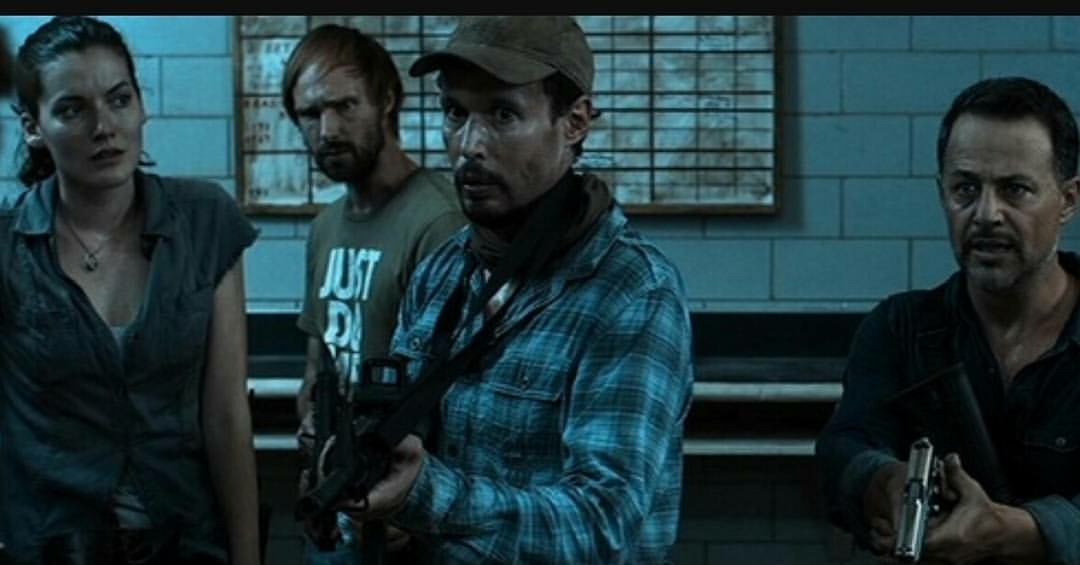Daylight’s End (2016) – A Gritty Post-Apocalyptic Action Ride
Daylight’s End, directed by William Kaufman and written by Chad Law, is a gritty, action-heavy post-apocalyptic thriller that blends the survival genre with vampiric horror. Released in 2016, the film stars Johnny Strong as a hardened loner navigating a ravaged world filled with feral, bloodthirsty creatures. With strong gunplay, tight pacing, and a gritty atmosphere, Daylight’s End delivers a no-frills survivalist fantasy that will appeal to fans of both action and horror.
Set years after a mysterious viral outbreak has transformed much of the human population into nocturnal, zombie-vampire hybrids, society has collapsed. Cities are abandoned, the government is gone, and survival has become brutal and lawless. The infected, known simply as “the creatures,” are fast, strong, and vicious—but they burn in daylight, forcing them to stalk prey at night.

The film follows Thomas Rourke (Johnny Strong), a grizzled, silent-type loner with a tragic past. He roams the ruins of America, scavenging supplies and taking out the infected with ruthless efficiency. Early in the film, Rourke rescues Sam Sheridan (Chelsea Edmundson), a young woman being attacked by raiders. This act leads him to a small group of survivors holed up in an old police station, led by the pragmatic Frank Hill (played by genre veteran Lance Henriksen). Though hesitant to trust others, Rourke reluctantly joins forces with them as they prepare for an all-out battle against the creatures—and the brutal "Alpha," a more evolved and intelligent version of the infected.
What makes Daylight’s End stand out among its low-budget contemporaries is its emphasis on gritty realism and tactical action. The gunfights are intense, with detailed reloads, flanking maneuvers, and military-style movements that feel authentic and grounded. Director William Kaufman, known for his sharp eye in action sequences, keeps the camera tight and the editing crisp. It’s clear the filmmakers prioritized stunt work and practical effects over CGI, giving the action a tangible, visceral feel.

Visually, the film uses a washed-out color palette to emphasize desolation. Urban decay, burned-out vehicles, and bleak alleyways dominate the backdrop, creating an oppressive atmosphere where danger feels constant. The creatures, though seen in bursts, are effectively menacing, especially the Alpha, who adds a welcome layer of dread and urgency.
Performance-wise, Johnny Strong commands the screen with a stoic intensity reminiscent of classic anti-heroes. He doesn’t say much, but his actions and physical presence tell the story. Lance Henriksen, as always, brings gravitas to the ensemble, grounding the group dynamics with his authority and weariness.

While Daylight’s End doesn’t reinvent the genre, it excels within its limitations. The dialogue is minimal, the plot straightforward, and character development takes a backseat to atmosphere and action. Some viewers may find it too derivative of Mad Max, 28 Days Later, or I Am Legend, but for fans of lean, survival-driven storytelling with strong action chops, this film delivers exactly what it promises.
In conclusion, Daylight’s End is a grim, adrenaline-fueled ride through a world teetering on the edge of extinction. It’s an underrated gem in the realm of indie post-apocalyptic cinema, bolstered by sharp direction, raw action, and an unforgiving tone. A must-watch for fans of survival horror and tactical thrillers.

